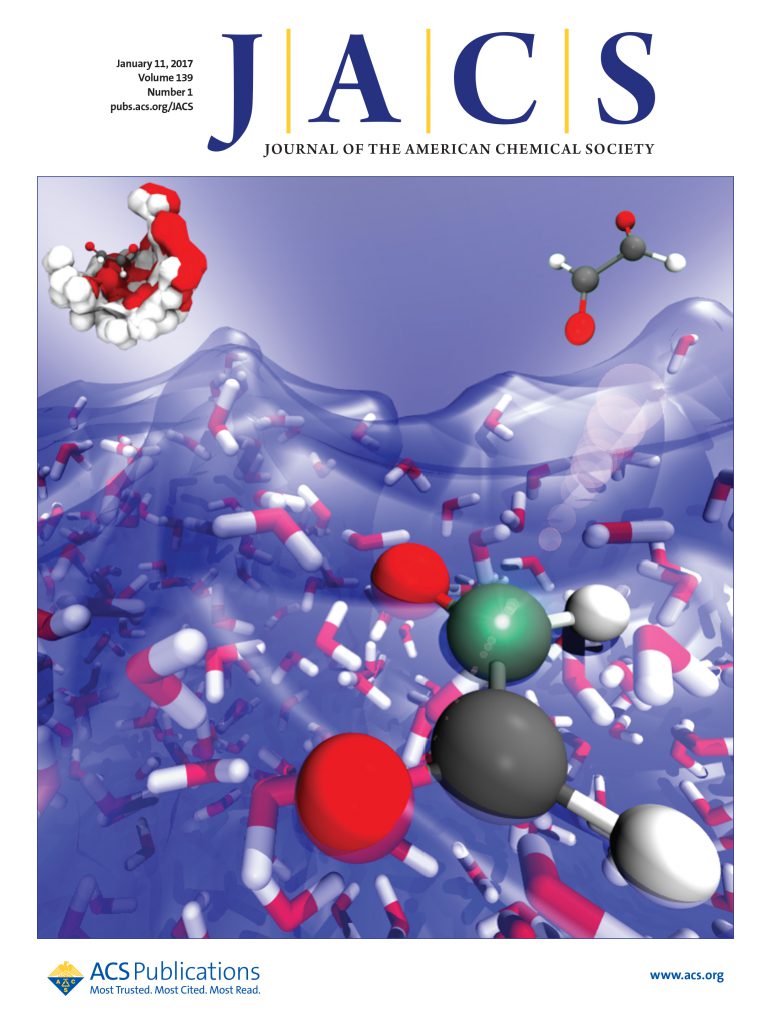Ether Rhodamines with Enhanced Hydrophilicity, Fluorogenicity, and Brightness for Super-Resolution Imaging
IF 14.4
1区 化学
Q1 CHEMISTRY, MULTIDISCIPLINARY
引用次数: 0
Abstract
Rhodamine dyes are widely used fluorophores in super-resolution fluorescence imaging due to their exceptional optical properties and “aggregation-disaggregation” induced fluorogenic activation. However, their excessive lipophilicity often reduces brightness in aqueous environments and causes off-target staining, limiting their effectiveness in high-resolution imaging. To address these challenges, we introduce an ether-decorated N-terminal modification strategy for rhodamine and silicon-rhodamine (Si-rhodamine), replacing conventional N-alkyl groups. The ether chains enhance water solubility, decrease aggregate size, and improve fluorogenicity across a wide concentration range. Their flexible, hydrophilic structure forms a protective shield around the xanthene core, minimizing dye-water interactions and reducing fluorescence quenching. Additionally, the inductive effect of the ether chains decreases the electron-donating strength of the amino groups, suppressing quenching caused by twisted intramolecular charge transfer (TICT). These modifications collectively increase the quantum yields of ER and ESiR in water from 0.35 and 0.19 (for tetraethyl-substituted analogs) to 0.70 and 0.41, respectively. Probes derived from ER and ESiR exhibit outstanding fluorogenicity, enhanced signal-to-noise ratios, and improved resolution in complex aqueous environments, demonstrating superior performance in advanced super-resolution imaging techniques such as structured illumination microscopy (SIM), stimulated emission depletion (STED) microscopy, and single molecule localization microscopy (SMLM). This work introduces a rational fluorophore design strategy that enhances aqueous brightness, minimizes nonspecific staining, and enables high-contrast, high-resolution imaging across multiple super-resolution modalities.

具有增强亲水性、荧光性和超分辨率成像亮度的醚罗丹明
罗丹明染料由于其独特的光学特性和“聚集-分解”诱导的荧光激活,在超分辨率荧光成像中被广泛应用。然而,它们过度的亲脂性往往会降低水环境中的亮度,导致脱靶染色,限制了它们在高分辨率成像中的有效性。为了解决这些挑战,我们引入了一种醚修饰的罗丹明和硅-罗丹明(Si-rhodamine)的n端修饰策略,取代传统的n-烷基。醚链提高了水溶性,减小了聚集体的大小,并在较宽的浓度范围内提高了致氟性。它们灵活的亲水性结构在杂蒽核心周围形成了一个保护罩,最大限度地减少了染料与水的相互作用,减少了荧光猝灭。此外,醚链的感应效应降低了氨基的给电子强度,抑制了分子内扭曲电荷转移(TICT)引起的猝灭。这些修饰共同将ER和ESiR在水中的量子产率从0.35和0.19(对于四乙基取代类似物)分别提高到0.70和0.41。源自ER和ESiR的探针表现出出色的荧光性、增强的信噪比和在复杂水环境中的分辨率,在先进的超分辨率成像技术(如结构照明显微镜(SIM)、受激发射耗尽显微镜(STED)显微镜和单分子定位显微镜(SMLM))中表现出卓越的性能。这项工作引入了一种合理的荧光团设计策略,可以增强水的亮度,最大限度地减少非特异性染色,并实现跨多个超分辨率模式的高对比度、高分辨率成像。
本文章由计算机程序翻译,如有差异,请以英文原文为准。
求助全文
约1分钟内获得全文
求助全文
来源期刊
CiteScore
24.40
自引率
6.00%
发文量
2398
审稿时长
1.6 months
期刊介绍:
The flagship journal of the American Chemical Society, known as the Journal of the American Chemical Society (JACS), has been a prestigious publication since its establishment in 1879. It holds a preeminent position in the field of chemistry and related interdisciplinary sciences. JACS is committed to disseminating cutting-edge research papers, covering a wide range of topics, and encompasses approximately 19,000 pages of Articles, Communications, and Perspectives annually. With a weekly publication frequency, JACS plays a vital role in advancing the field of chemistry by providing essential research.

 求助内容:
求助内容: 应助结果提醒方式:
应助结果提醒方式:


